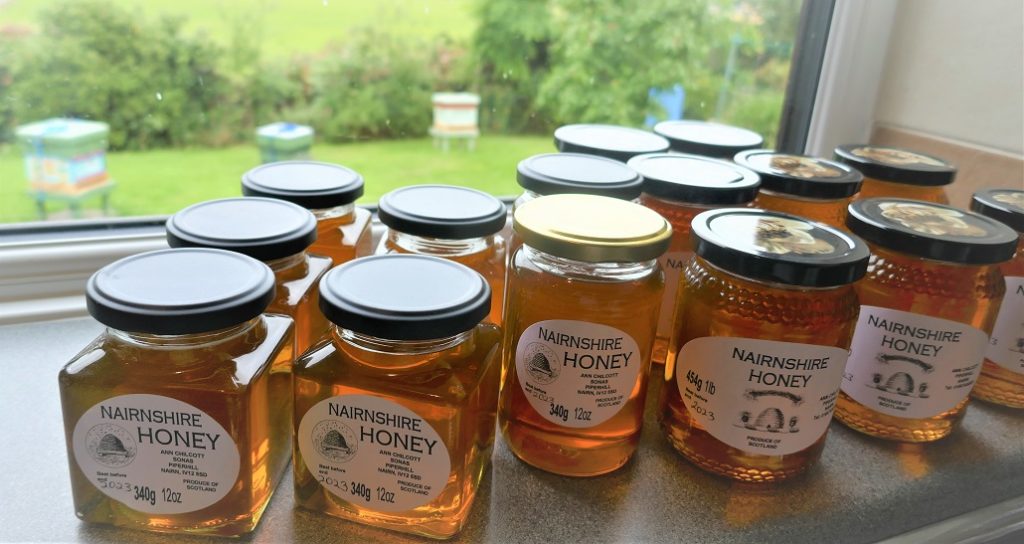
Another busy week passed in a blur. I tweaked a chest muscle last Friday lifting a really heavy super of honey and it’s only just less painful today. However, the upside is on the window shelf. At least it was; but I’ve only got 3 of the 41lbs left to sell. I didn’t heat the honey but ran it through a 200 micron mesh bag and it’s nice and clear
On Tuesday evening, I really enjoyed Margaret Forrest’s Zoom presentation on “Bee Farming in Edinburgh and Midlothian” and got a few good tips. By the way, you can read about Margaret and her interesting set-up in a blog from last year. One of the things I learned from her is to try and supply a small number of customers all year round rather than sell all the honey at a few farmer’s markets and have none stored. I’ve only got 9 colonies at the moment and there is not a massive surplus of honey because I increased the apiary from 3 at the start of the season. You can’t have both in the first season.
There’s a huge demand for local honey here. I’ve taken a leaf out of Margaret’s book and not put my for sale sign up for this batch of honey. I’ve got list of 12 loyal customers who want to buy all year round and I aim to keep them supplied. I store the honey in plastic food grade tubs and warm them up in a special honey warming cabinet where I can control the temperature and keep it low enough not to spoil the flavour and enzymes. When the orders build up I will warm the honey and bottle it over winter.
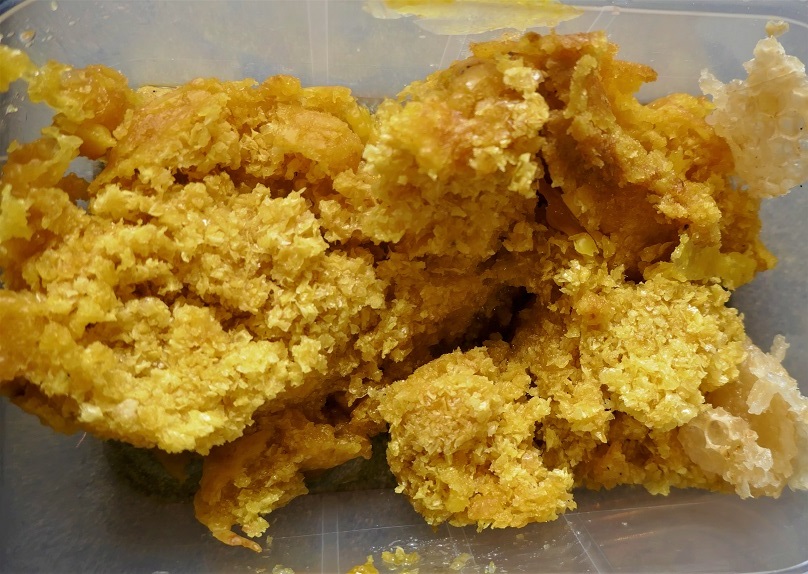
This batch of honey is probably mainly ragwort due to the bright yellow cappings, which a crop dandelion honey also produces, and the piquant citrus aftertaste. One of my new customers Paul remarked on the citrus notes this morning and found it delicious.
Try Before You Buy.
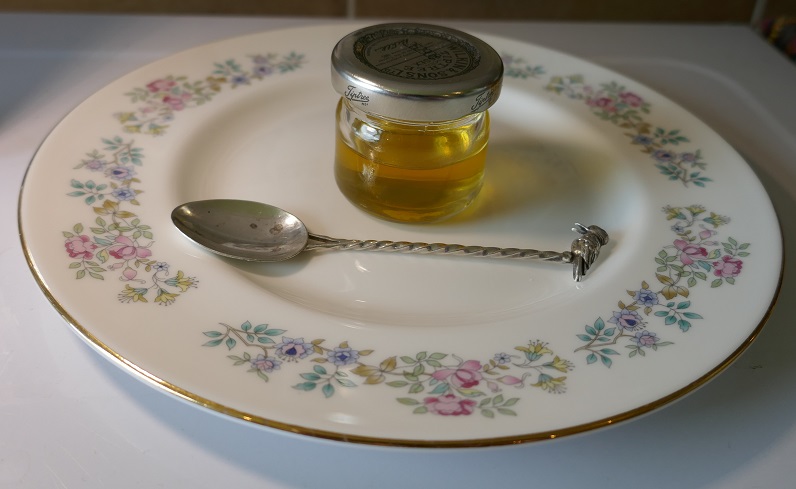
A lot of my customers are used to the milder white oil seed rape honey so I let them try the new batches before they buy. Every batch is slightly different depending on the forage which makes honey so interesting.
Colony Thirst and Water Collection.
Wednesday was big night for me because the Scottish Beekeepers Association President, Phil McAnespie, asked if I would introduce Professor Tom Seeley’s presentation via “Go To Webinar” which can host up to 1,000 attendees online. There’s a lot of preparation, behind the scenes, to be done for this new way of presenting to work. I was really excited to be part of the team involved but it took some time to get my part up to speed. If you missed it live, it’s been recorded and will be available soon for a limited time on the Scottish Beekeepers Association website.https://scottishbeekeepers.org.uk/
It was one of those really interesting and useful presentations where Tom explains the fascinating parts of scientific research, and shows how it can be applied to practical beekeeping.
New Out Apiary.
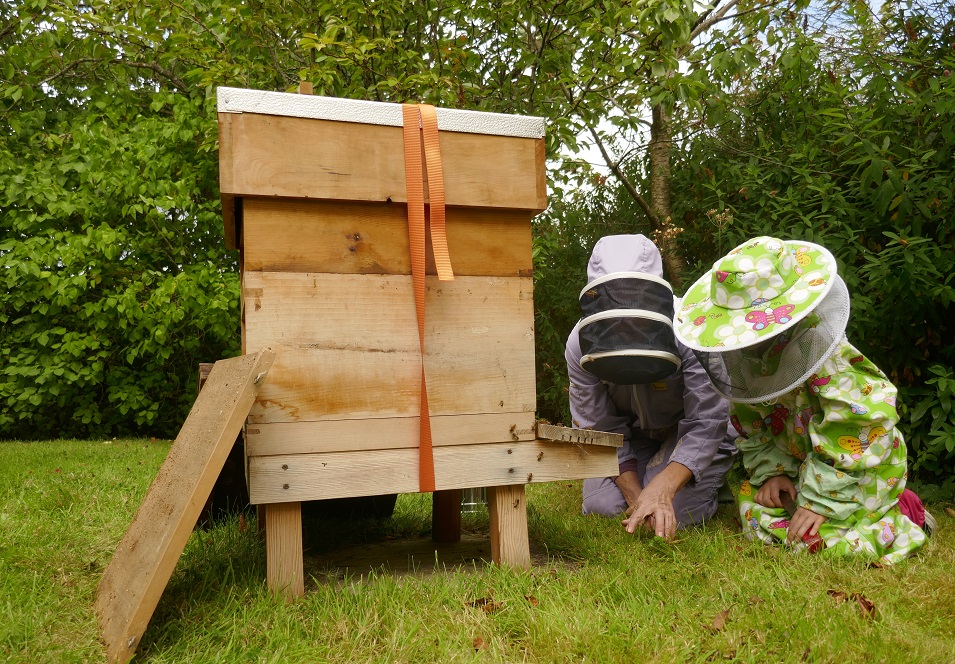
The home apiary is bursting at the seams so a neighbour along the road has opened up her garden and offered space for 2 colonies. The wee bee apprentice, Connie, and I are checking the hive entrance as the drones are being thrown out. Last season, she learned how to pick up drones to simulate marking a queen so she practised her skills on Tuesday. She will have a real queen to mark next week as Queen Betty 2nd didn’t get mated and is producing only drones. We’ll have to put her in the freezer for me to dissect at a later date. It is quite a humane way to euthanize a bee.
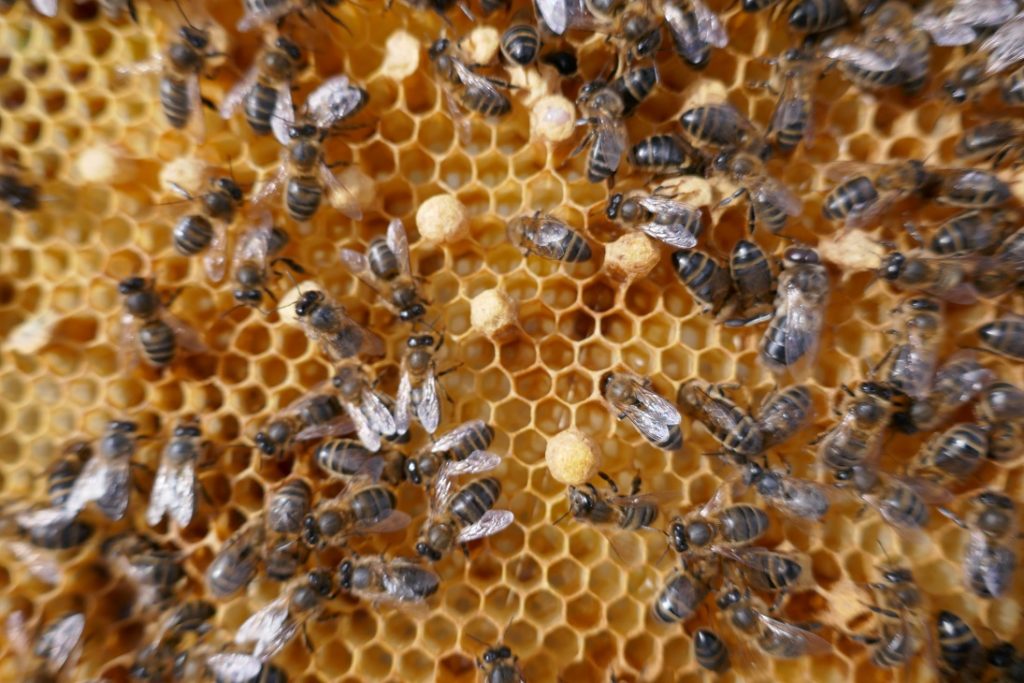
This is what a drone laying queen does though queen Betty has only a tiny patch of drone brood close together. This photo was taken on a visit to Colonsay last year when the offending queen was removed by Andrew Abrahams and promptly despatched.
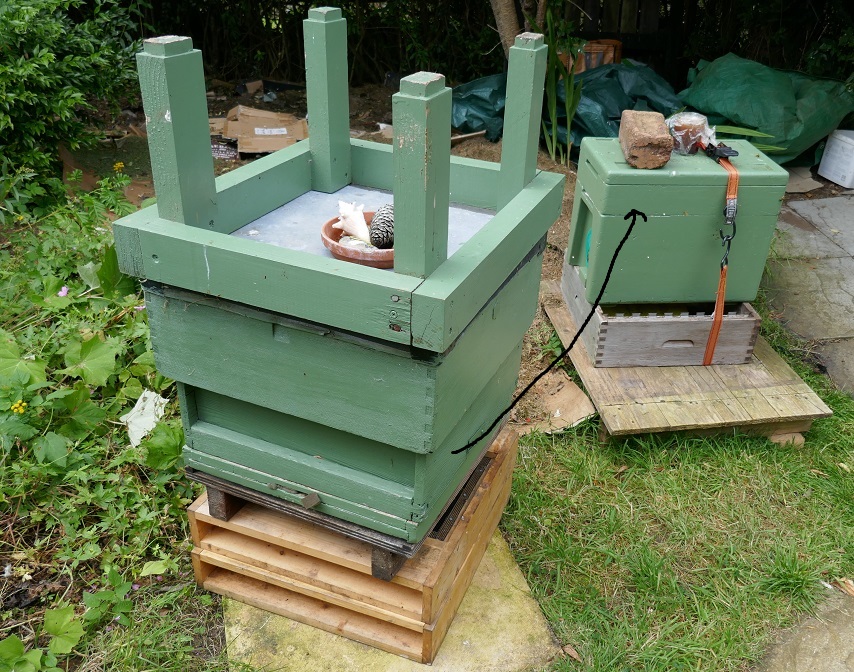
The small colony in the wooden hive will be united with the small nucleus in the poly hive which is a multi-story piece of kit with another deep box for brood frames to go on top. I will unite them using the newspaper method next week. Meanwhile, I’m moving the wooden hive closer and rotating it so that its entrance will align with the nuc’s entrance . I bought another poly nuc from Simon the Beekeeper because his prices are reasonable and he doesn’t charge the earth for delivery to the Scottish Highlands as many companies do. https://www.simonthebeekeeper.co.uk/
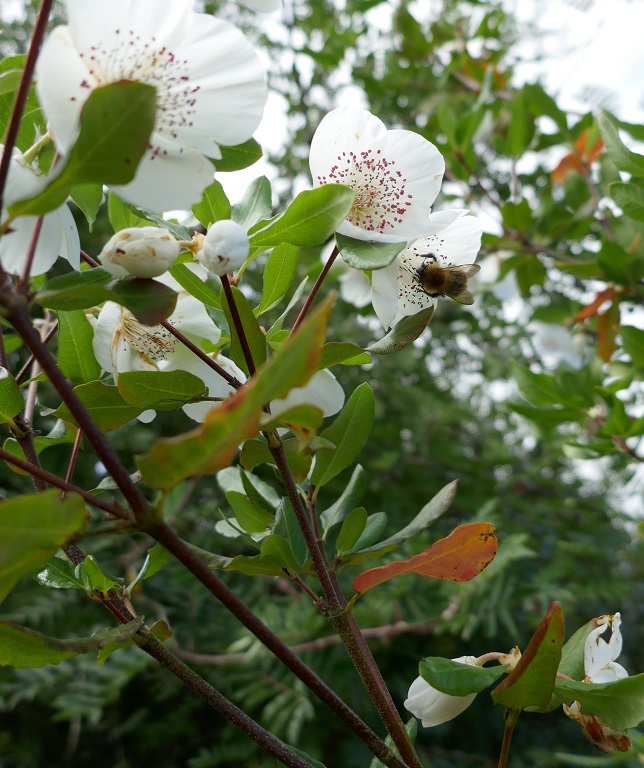
Compared with last year’s two flowers, the leatherwood is putting on a great show and attracting lots of bees including common carder bees,
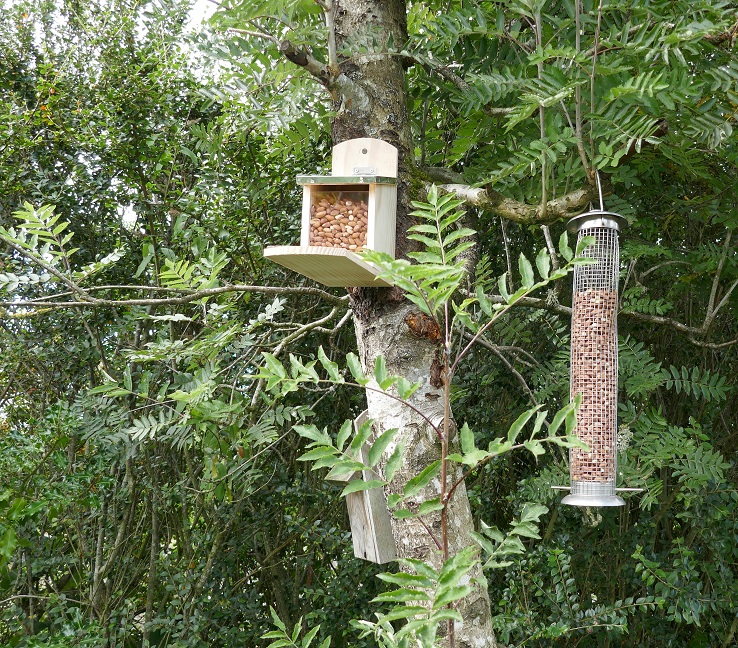
I’m hoping to attract the squirrel back. He was in the orchard a couple of weeks ago. There’s been a lot of forestry work and plantation felling nearby so perhaps this will encourage the squirrels to venture down into our hamlet.
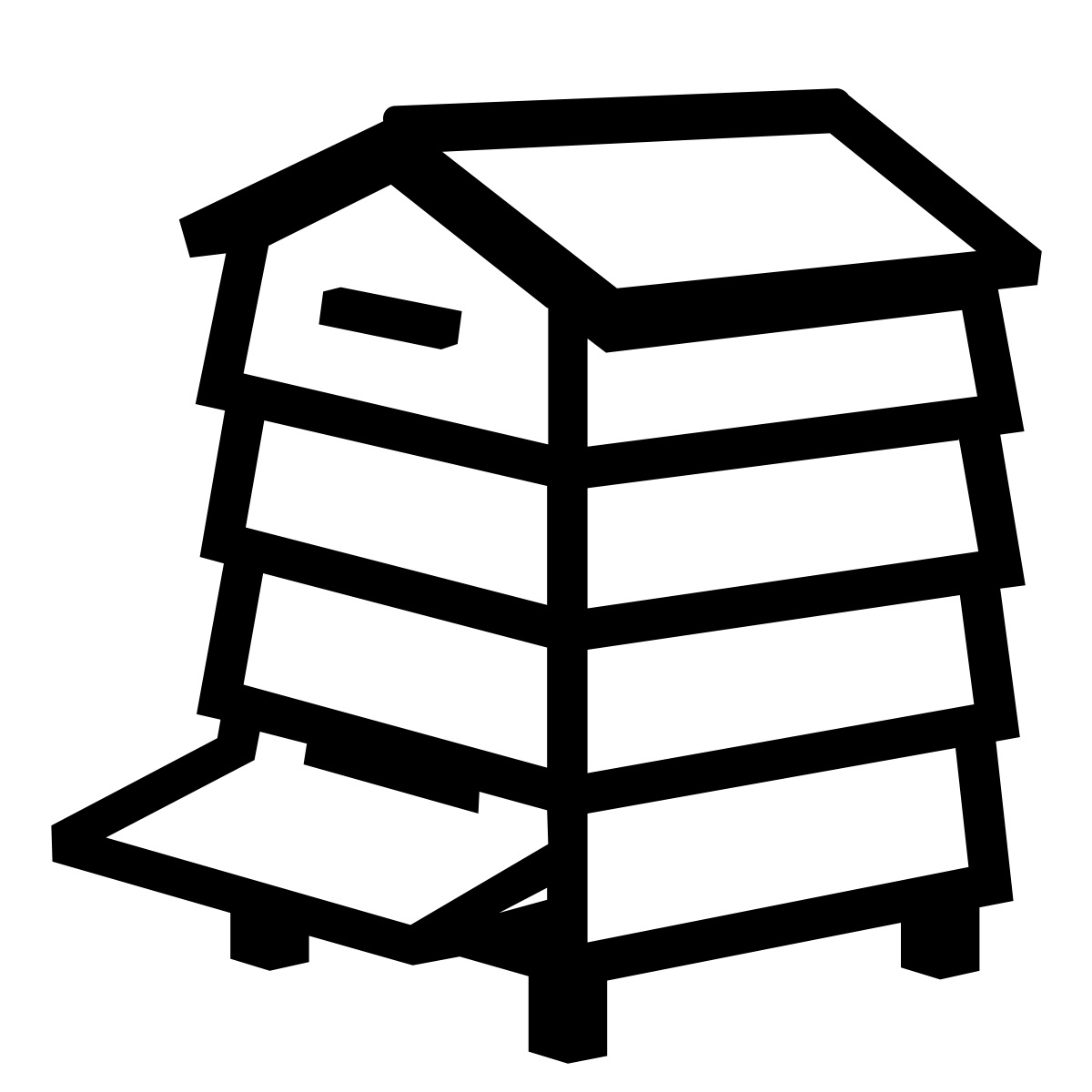
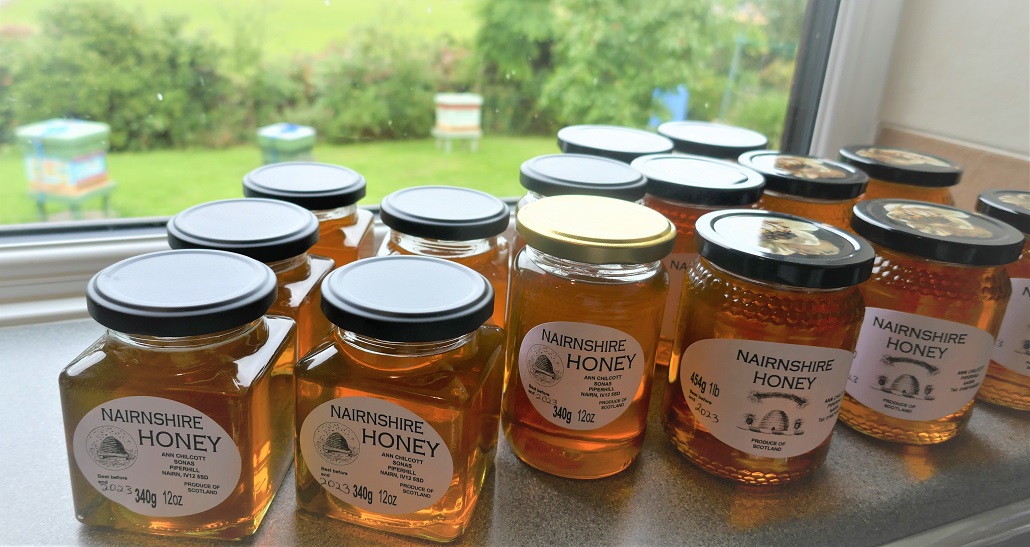
I enjoyed reading that, Ann. Thank you. A smear of Vaseline on parts in direct contact will help you separate the brood boxes of the polynuc in the spring, Ann – I learnt the hard way 😉
Oh great tip, Margaret Anne. Thank you for that.